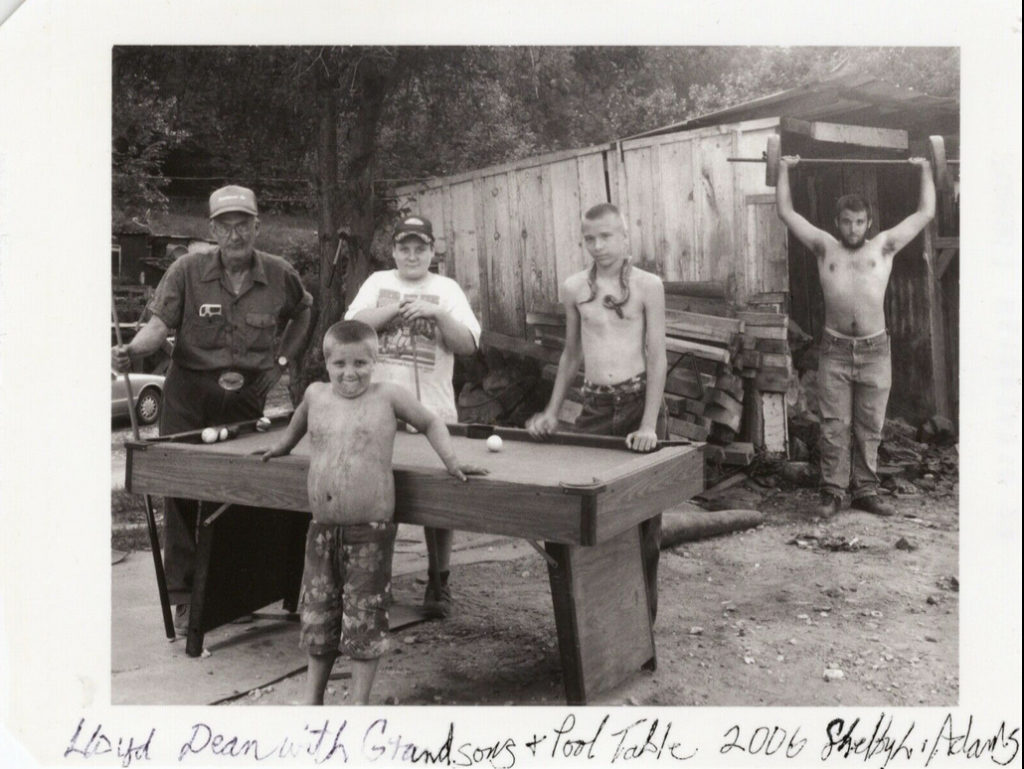When photographing people, we tend to distinguish between subjects that are posing – basically sitters fully aware they are being photographed – and those photographs that are taken of people not aware they are being photographed, often classified as street photography. I am interested in how these issues play out in a particular situation.
I have collected photographs by Shelby Lee Adams for a while. In my mind one of the greatest, if not the greatest living American photographer. Mr. Adams has been photographing in Eastern Kentucky for many, many years. He has been making portraits of families and individuals in the settings where they live, using an 8 x 10 camera.

In the technique employed by Mr. Adams there is a long process of building confidence, sharing meals and eventually posing the subject(s) for a portrait in their environment. Mr. Adams uses a large format camera with a Polaroid back. He would use the Polaroid back to ensure that his lighting, which was often quite complicated, offered him the right support for his final photograph, as well as a tool to discuss with the subjects of his photograph, confirming that they like the setting of the image. He would often present the Polaroid to the subject(s).

I have had several discussions around the use of Polaroid backs in portraiture, because it crosses between the sitter being unaware and the posed photograph. This is because when you make a photograph using the Polaroid back, the sitter knows it is not yet ‘serious’ and therefore their pose and facial expression is often more relaxed. I would call it more natural, more genuine. More real. As such, the Polaroid back crosses from the photograph where the sitter is unaware, and the final staged photograph using the 8×10 photograph. The subject knows there is a photograph being taken…. later, but the Polaroid is just a step towards the final photograph, so no need to stress or worry what it looks like, just relax.
I have shown above the Polaroid, which is in my collection, as well as the final photograph. I personally like the Polaroid, as I find that the subjects are more relaxed and perhaps project a more ‘true’ representation. For example, I find that Grandpa has applied more of a ‘poker face’ in the actual, final photograph. I find the young man, the grandson in the white t-shirt has a more relaxed expression in the Polaroid than in the final image.


In a similar, but different comparison, here are two photographs by Karl Lagerfeld. The Polaroid is in my collection, the other image is what was ultimately published in Glamour Magazine in Italy in 1994. I know this is completely different, but the result is the same. At least in my opinion. I find the expression in the Polaroid much more relaxed and interesting than in the final shot, which was ultimately published.
There are of course countless discussions to be had on this topic, but perhaps these two examples are food for thought. Whether you agree, or disagree, doesn’t matter. What does matter is that we think about how a sitter poses and how we get the best result. The most authentic. The image that best represents the sitter.
Harbel

